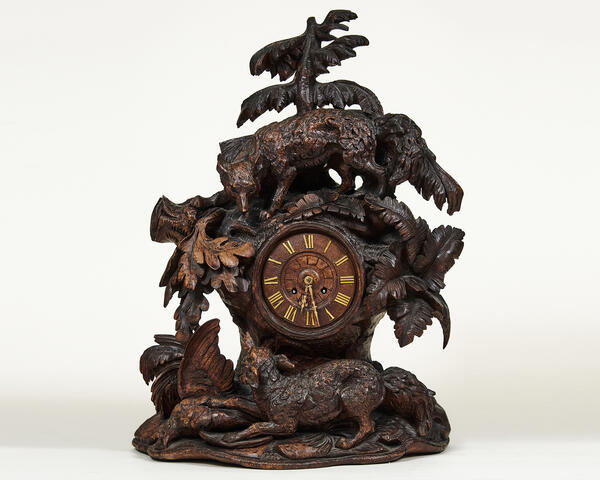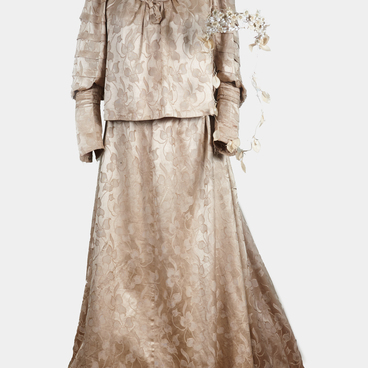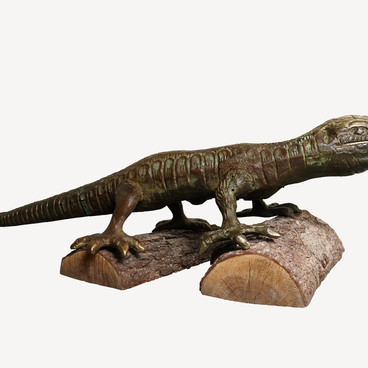The clock from the museum collection is distinct for its unique carving. The carver, who worked on this clock, managed to create a complex multi-figure composition out of a single wood piece. The case is performed in a forest style and is decorated with figures of foxes. It is equipped with a Swiss spring-powered chime movement produced in 1880.
The first home clocks were not equipped with springs, so they could only be wall-mounted. Usually, they were made of iron or brass, and the movement of these small-size clocks was identical to that of the long familiar tower clocks. Eventually, this type of clock grew so popular that its production was continued even after the spring drive was invented.
The spring-powered clocks became available in England later than in Germany and France, so the demand for them was high. The table bronze clocks, produced in approximately 1430 by an unknown clockmaker for the Burgundian Duke Philip the Good, are considered the very first spring-powered clocks in the world clockmaking history.
Early portable mechanical clocks resembled a round or square brass box. The examples made of ivory, black and mahogany wood and metal have also survived to this day. Time was indicated by engraved Roman numerals with palpable brass ‘grains’ arranged in a circle, so that one could tell the time by touch even at night. The clocks had only one hand at the time, which was often performed in the shape of some fantastic creature, for example a dragon or a mermaid. The end of the 15th century witnessed the one-handed table clocks that were made in the form of medieval towers and had two faces: one face to show the time and another to set up the alarm clock.
The 18th century English table clock can be found in many collections all over the world, for they were quite in demand and mass-produced at the time. The clocks were handmade, and they were called ‘spring-powered clocks’ for their type of clockwork. They were expensive, so not everyone could afford to buy one. The mechanical table clocks had numerous advantages, the main one being that they only needed to be wound once every 8 days.
The first home clocks were not equipped with springs, so they could only be wall-mounted. Usually, they were made of iron or brass, and the movement of these small-size clocks was identical to that of the long familiar tower clocks. Eventually, this type of clock grew so popular that its production was continued even after the spring drive was invented.
The spring-powered clocks became available in England later than in Germany and France, so the demand for them was high. The table bronze clocks, produced in approximately 1430 by an unknown clockmaker for the Burgundian Duke Philip the Good, are considered the very first spring-powered clocks in the world clockmaking history.
Early portable mechanical clocks resembled a round or square brass box. The examples made of ivory, black and mahogany wood and metal have also survived to this day. Time was indicated by engraved Roman numerals with palpable brass ‘grains’ arranged in a circle, so that one could tell the time by touch even at night. The clocks had only one hand at the time, which was often performed in the shape of some fantastic creature, for example a dragon or a mermaid. The end of the 15th century witnessed the one-handed table clocks that were made in the form of medieval towers and had two faces: one face to show the time and another to set up the alarm clock.
The 18th century English table clock can be found in many collections all over the world, for they were quite in demand and mass-produced at the time. The clocks were handmade, and they were called ‘spring-powered clocks’ for their type of clockwork. They were expensive, so not everyone could afford to buy one. The mechanical table clocks had numerous advantages, the main one being that they only needed to be wound once every 8 days.



